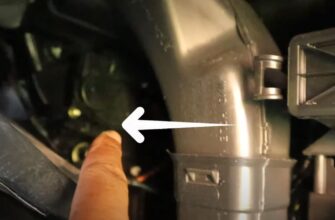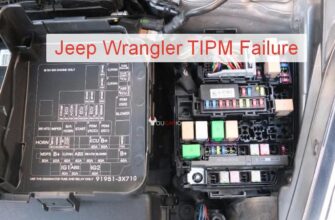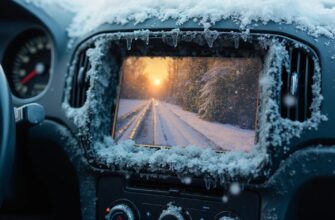You’ve just finished pumping gas into your rugged Jeep Wrangler, hop back in, turn the key, and suddenly, the check engine light is flashing frantically on your dashboard! It’s an alarming sight, especially since everything seemed fine just moments ago.
While a solid check engine light can indicate many things, a flashing light is often a signal of a more urgent problem, potentially related to engine misfires that could damage your catalytic converter. However, right after fueling, one common cause is thankfully less severe, though the flashing aspect needs careful attention.
Let’s break down what’s likely happening and what you should do.
The Most Common Culprit After Fueling: The Gas Cap
When a check engine light comes on immediately after getting gas, the first and most frequent suspect, particularly on many vehicles including Jeeps, is related to the fuel system’s integrity – specifically, the gas cap.
It’s All About the EVAP System
Modern vehicles have an Evaporative Emission Control (EVAP) system. This system captures fuel vapors from the tank and sends them to the engine to be burned, preventing them from escaping into the atmosphere. It’s a sealed system.
If the gas cap is loose, damaged, or missing, it creates a leak in the EVAP system. The car’s computer detects this leak because the system can’t hold pressure. This is a common reason for a solid check engine light.
The “Three Clicks” Rule
When putting your gas cap back on, you should always tighten it until you hear at least three clicks. This ensures the cap is sealed correctly and the EVAP system remains closed. Failing to do this is a prime reason for post-fueling check engine lights.
What to Do Immediately If the Light Flashes
A flashing check engine light typically indicates a condition (like a severe misfire) that could cause damage to the catalytic converter if the engine continues to run. While a loose gas cap usually triggers a solid light (indicating a non-urgent EVAP leak), seeing it flash right after fueling might suggest one of two things:
- The loose cap is causing a significant enough leak to confuse the system, perhaps triggering a related code.
- There’s another issue happening concurrently that is causing a misfire or other serious problem, and it just happened to start right after you got gas.
Therefore, if your light is flashing, it’s important to act quickly:
Step 1: Pull Over Safely
Find a safe place to stop your vehicle as soon as possible. Turn the engine off.
Step 2: Re-seat the Gas Cap Properly
Open the fuel door and remove the gas cap. Inspect it for any visible damage (cracks, broken seal). If it looks okay, screw it back on firmly until you hear at least three distinct clicks. This confirms a proper seal.
Step 3: Restart and Assess (Caution Advised)
Start your Jeep’s engine.
- If the check engine light is now SOLID (not flashing), this strongly suggests the gas cap was the issue. Drive normally. The solid light should turn off on its own after a few driving cycles as the system re-tests and confirms the leak is sealed. This might take anywhere from a few miles to a day or two of normal driving.
- If the check engine light is STILL FLASHING, or if the engine is running rough, shaking, or seems to lack power, do not continue driving long distances. A flashing light usually means there’s an active problem that could harm the catalytic converter.
Other Possible Reasons (If the Cap Isn’t the Issue or Light Keeps Flashing)
If re-seating the gas cap doesn’t change a flashing light to solid, or if the light comes back flashing later, the issue is more serious than a simple loose cap. Other potential causes could include:
- Other EVAP System Leaks: A leak somewhere else in the hoses, valves (like the purge valve or vent valve), or charcoal canister.
- Faulty Purge or Vent Valve: These components in the EVAP system can fail.
- Engine Misfire: This is a common trigger for a flashing check engine light. A misfire could be due to bad spark plugs, coil packs, fuel injectors, or other ignition/fuel system issues.
- Catalytic Converter Issues: If misfires have been occurring, the catalytic converter could be failing or damaged, which can also trigger a light.
What Real Jeep Owners Say
Hearing from others who have experienced this can be reassuring and provide insight:
“Had my heart sink when the light started flashing right after the pump! Turned out I just didn’t click the gas cap enough times. Tightened it, drove for half a day, and the light went off. Felt pretty silly!” – Mark K., Jeep Wrangler Owner
“Mine flashed after gas, checked the cap, seemed fine. It kept flashing, and the Jeep felt a bit shaky. Ended up being a faulty coil pack that decided to go out right then. Coincidence is weird sometimes.” – Sarah P., Jeep Wrangler Driver
“Always get three clicks now! Learned the hard way after a solid check engine light scare. My mechanic told me the loose cap is super common for setting off the light on these.” – David L., Regular Fueler
(Note: These quotes are illustrative based on common experiences with this issue.)
When to Seek Professional Help
While the gas cap is the easy first check, a flashing check engine light should not be ignored, especially if the engine runs poorly.
- If the light remains flashing after you’ve properly re-seated the gas cap.
- If your Jeep Wrangler is experiencing noticeable symptoms like rough idling, shaking, loss of power, or strange smells.
- If a solid check engine light comes back on after re-seating the cap and doesn’t go off after a few driving cycles.
In these cases, it’s best to have a qualified mechanic diagnose the problem. They can read the specific error codes stored in your Jeep’s computer to pinpoint the exact cause.
Related Posts from Our Blog
For more information on check engine lights and related automotive issues, check out these articles:
- How to Fix the P0171 Lean Code on Your Vehicle
- Diagnosing and Fixing the P0420 Catalytic Converter Efficiency Code
- Why Does My Car Smell Like Gas?
Conclusion
A flashing check engine light right after filling up your Jeep Wrangler can be alarming, but start by checking that gas cap! Ensure it’s tightened until you hear at least three clicks. If the light is still flashing or the vehicle runs poorly, it indicates a more serious issue that requires professional diagnosis. Don’t delay in getting it checked out to keep your Wrangler running smoothly and prevent potential damage.








